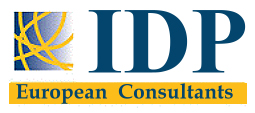
| ||||||||
|
Learning Outcomes Objectives and goalsClick to read
At the end of this module you will be able to:
Flexicurity Defining FlexicurityClick to read
“Flexicurity is an integrated strategy for enhancing, at the same time, flexibility and security in the labour market. It attempts to reconcile employers' need for a flexible workforce with workers' need for security – confidence that they will not face long periods of unemployment.” ApproachesClick to read
Sultana, R.G., 2012. Flexicurity: Implications for lifelong career guidance. The European Lifelong Guidance Policy Network.
Digital Nomads Digital nomads - Advantages and DisadvantagesClick to read
https://www.investopedia.com/terms/d/digital-nomad.asp.
Defining Digital nomadsClick to read
First put forward by Tsugio Makimoto and David Manners in their publication: “The Digital Nomad” (1997). They predicted the creation of a single, all-powerful communication system that would enable employees to work from anywhere. These are the people who make their living using telecommunication technologies and live a ‘nomadic’ lifestyle. They work from foreign countries, coffee shops, public libraries, co-working spaces, or recreational vehicles BUT get their work done through devices such as smartphones and laptops and use mobile hotspots. Maintaining Consistency Identifying work hours to maintain consistencyClick to read
• Time management is the ability to plan, organize, and control your time. Controlling the hours in your day will help you accomplish your goals. It often includes planning for the future, setting goals, prioritizing tasks, and monitoring where your time actually goes. • Set a work schedule. • As long as you get your hours in and the work gets done, you can come and go as you please. • The reason why so many successful entrepreneurs use flexible work schedules are that it lets them to work when they’re most productive. Eventually, having a work schedule makes sustaining a work-life balance more achievable. • Intuitive Employee Scheduling App for Deskless Employees Tips for constructing a personal consistency scheduleClick to read
• Determine your working needs. Use this information to identify what hours your businesses operate (time frames etc). • Recognize and write down when you’re most productive. • Schedule time for breaks and concentration time. • Once the work schedule is created and share it (e.g. by using scheduling software) to your colleagues in order to be informed about your working times. • It is suggested to have backup plans prepared, if needed. Customer and employee needs Working time built around customer needsClick to read
Tips for Identifying and working around customer needs • Track client reviews. Social media, public forums, websites are possible spaces for customers to present their opinions and experiences about company’s products and services, (positive or negative). • Centralise client data. A Customer Relations Management tool, can help you to address customer needs and increase the speed and efficiency for handing out customers’ support requests. • Optimize the customer experience. Identifying customers’ personal preferences helps you to provide personal customer support (e.g. a customer will receive offers and communications based on his/her FaceBook “likes”).
Working time built around employee needsClick to read
Tips for identifying and working around employee needs • Use the practice of employee feedback. Employee feedback is important because it lets staff know where they stand and how they could do better. HR software platforms do provide the opportunity for employers to keep a digital record of employees' feedback regarding several organizational issues. • Working around employee needs. Conclusions Summing UpClick to read
Key takeawaysClick to read
People who make their living using telecommunication technologies and live a nomadic lifestyle are referred to as digital nomads |
Test Yourself! 
Description:
This session is focused on familiarizing candidates with the notion of flexible work time. Initially the term flexicurity is being presented along with its two dominant approaches. The term digital nomads is being explained as well as its advantages and disadvantages. Next the topic of mainintaing consistency is being presented followed by tips for setting an efficient work schedule. Finally, concerning how work around customer and employee needs, guidelines for its issue are being provided.
Keywords
Flexicurity; digital nomads; work hours consistency; working time built around customer and employee needs
Bibliography
Burroni, L., & Keune, M. (2011). Flexicurity: A conceptual critique. European Journal of Industrial Relations, 17(1), 75-91.
Sultana, R.G., 2012. Flexicurity: Implications for lifelong career guidance. The European Lifelong Guidance Policy Network.
Hallencreutz, J. and Parmler, J., 2021. Important drivers for customer satisfaction–from product focus to image and service quality. Total quality management & business excellence, 32(5-6), pp.501-510.
Kubiak, E., 2020. Increasing perceived work meaningfulness by implementing psychological need-satisfying performance management practices. Human Resource Management Review, p.100792.
 Play Audio
Play Audio 














